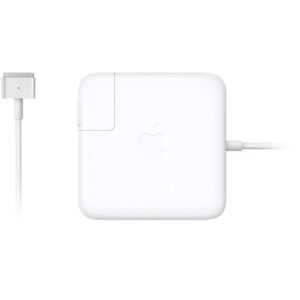Looking to learn how to make a car battery charger? You’ve come to the right place. In this article, we’ll guide you through the process of creating a car battery charger from scratch. Whether you’re a beginner or an experienced DIY enthusiast, this step-by-step guide will help you build a functional and efficient charger that will keep your car battery powered up and ready to go. So, let’s dive in and explore how to make a car battery charger that will keep you on the road without any worries!
How to Make a Car Battery Charger
Introduction
In this comprehensive guide, we will walk you through the process of making your own car battery charger. Whether you’re a novice DIY enthusiast or an experienced hobbyist, building your own charger can be a rewarding and cost-effective project. Not only will you save money, but you’ll also have the satisfaction of knowing you have the skills to tackle this important task. So, let’s dive in and learn how to make a car battery charger from scratch!
Understanding the Basics
Before we start building, let’s take a moment to understand the basic components and principles of a car battery charger. A car battery charger essentially converts AC power from an electrical outlet into DC power, which is then used to charge the battery. The charger consists of a transformer, rectifier, and voltage regulator to provide the necessary charging current and voltage control. Now that we have a clear idea of what’s involved, let’s move on to the step-by-step process of building a car battery charger.
Gathering the Materials
To get started, you’ll need to gather the necessary materials and tools. Here’s a list of items you’ll need for this project:
- Transformer
- Rectifier
- Voltage regulator
- Diodes
- Capacitors
- Resistors
- Inductor
- Heat sink
- LED indicator
- Wires
- Soldering iron
- Multimeter
- Insulating materials
- Enclosure for housing
Building the Charger Circuit
Now that you have all the necessary materials, let’s move on to building the charger circuit. Follow these steps carefully:
Step 1: Safety First
Before working on any electrical project, always prioritize safety. Make sure to unplug the charger and discharge any residual energy in the circuit before proceeding. Wear safety goggles and gloves to protect yourself from accidents.
Step 2: Transformer
The transformer converts the high voltage AC input to a lower voltage needed for charging the battery. Choose a transformer with a suitable voltage rating based on your car battery’s needs. Connect the primary winding to the AC power source and the secondary winding to the rectifier.
Step 3: Rectifier
The rectifier converts AC power to DC power. There are several types of rectifiers available, such as bridge rectifiers or individual diodes. Connect the rectifier to the secondary winding of the transformer. Ensure the polarity is correct to prevent damaging the components.
Step 4: Voltage Regulator
The voltage regulator ensures a stable charging voltage to prevent overcharging or undercharging the battery. Choose a regulator that matches your battery’s voltage requirements. Connect the output of the rectifier to the input of the voltage regulator.
Step 5: Filtering and Smoothing
To minimize voltage fluctuations and noise, add capacitors to the circuit for filtering and smoothing. Capacitors act as energy storage devices that help maintain a stable voltage. Connect capacitors across the input and output of the voltage regulator.
Step 6: Inductor and Diodes
To further stabilize the output voltage, add an inductor and diodes in parallel with the output of the voltage regulator. The inductor helps filter out any remaining fluctuations, while the diodes prevent reverse current flow.
Step 7: LED Indicator
Include an LED indicator in your circuit to provide visual feedback on the charging status. Connect the LED in series with a resistor across the output of the voltage regulator. The LED should illuminate when the battery is being charged.
Testing and Troubleshooting
Once you’ve completed building the charger circuit, it’s important to test it before connecting it to your car battery. Follow these steps for testing and troubleshooting:
Step 1: Double-check Connections
Inspect all the connections and ensure they are secure. Loose connections can lead to poor performance or even damage the circuit. Pay special attention to solder joints and make any necessary corrections.
Step 2: Measure Voltage
Use a multimeter to measure the output voltage of the charger circuit. Ensure it matches the required voltage for your car battery. If the voltage is too high or too low, troubleshoot the circuit for potential issues.
Step 3: Load Testing
Connect a load, such as a resistor or dummy battery, to the charger circuit and observe how it performs under load. The charger should maintain a stable voltage and deliver the required current to the load.
Step 4: Monitor Charging Process
Connect the charger to your car battery and monitor the charging process. Ensure the LED indicator lights up, indicating that the battery is being charged. If the LED does not illuminate or if the battery doesn’t charge, revisit the circuit and check for any faults.
Step 5: Safety Precautions
Always follow safety precautions while charging your car battery. Avoid overcharging, which can lead to battery damage or even explosion. Disconnect the charger once the battery reaches a full charge.
Congratulations! You’ve successfully learned how to make a car battery charger from scratch. By understanding the basic components and following the step-by-step process, you can now build your own charger tailored to your specific needs. Remember to prioritize safety and follow all precautions when working with electrical circuits. Enjoy the satisfaction of building and using a charger that will keep your car battery in optimal condition for years to come.
Now that you have the knowledge and skills to create your own car battery charger, why not give it a try? Building your own charger not only saves you money but also allows you to customize it according to your requirements. So, gather your materials, follow the steps outlined in this guide, and embark on this exciting DIY project. Happy charging!
Frequently Asked Questions
What materials are needed to make a car battery charger?
To make a car battery charger, you will need the following materials:
- A transformer
- A diode
- An electrolytic capacitor
- A resistor
- A voltage regulator
- Wires
- Alligator clips
How do I assemble the components to create a car battery charger?
To assemble the components and create a car battery charger, follow these steps:
- Connect the transformer to the power supply.
- Connect the diode to the transformer to convert the alternating current to direct current.
- Connect the electrolytic capacitor and the resistor to smooth the output voltage.
- Connect the voltage regulator to control the output voltage.
- Connect the wires to the output terminals of the charger.
- Attach alligator clips to the wires for easy connection to the car battery.
Is it safe to make a car battery charger at home?
Yes, it is safe to make a car battery charger at home if you follow proper safety precautions. Make sure to use insulated wires, handle electrical components with care, and avoid working on the charger while it is plugged in or connected to a power source. It is also recommended to have some knowledge of electronics or seek assistance from someone experienced in this area.
Can I use a car battery charger to charge other types of batteries?
No, it is not advisable to use a car battery charger to charge other types of batteries. Car batteries require specific voltage and current settings, which may not be suitable for other types of batteries like those used in portable electronic devices. Using a charger designed for a specific battery type is safer and more efficient.
How long does it take to charge a car battery using a homemade charger?
The charging time for a car battery using a homemade charger can vary depending on factors such as the battery’s capacity and level of charge. However, as a general guideline, it may take several hours to fully charge a car battery. It is recommended to monitor the battery’s voltage and charge level during the charging process to ensure it does not overcharge.
Final Thoughts
In conclusion, making your own car battery charger can be a cost-effective and convenient solution. By following a few simple steps, you can create a charger that meets your specific needs. Start by gathering the necessary materials and tools, then carefully assemble the charger following a detailed guide. Ensure that you prioritize safety throughout the process, such as wearing protective gear and working in a well-ventilated area. With patience and attention to detail, you can successfully make a car battery charger that will keep your vehicle running smoothly. So, if you’re looking to save money and have a reliable charger on hand, consider trying your hand at making a car battery charger.



